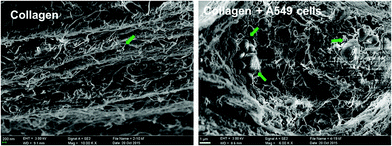Take a look at the most-downloaded RSC Advances articles from the months of October, November and December 2015 and let us know what you think!
Size-controlled silver nanoparticles synthesized over the range 5–100 nm using the same protocol and their antibacterial efficacy
Shekhar Agnihotri, Soumyo Mukherji and Suparna Mukherji
RSC Adv., 2014,4, 3974-3983
DOI: 10.1039/C3RA44507K
Free radicals, natural antioxidants, and their reaction mechanisms
Satish Balasaheb Nimse and Dilipkumar Pal
RSC Adv., 2015,5, 27986-28006
DOI: 10.1039/C4RA13315C
Thermal-runaway experiments on consumer Li-ion batteries with metal-oxide and olivin-type cathodes
Andrey W. Golubkov, David Fuchs, Julian Wagner, Helmar Wiltsche, Christoph Stangl, Gisela Fauler, Gernot Voitic, Alexander Thaler and Viktor Hacker
RSC Adv., 2014,4, 3633-3642
DOI: 10.1039/C3RA45748F
Synthesis and properties of molybdenum disulphide: from bulk to atomic layers
Intek Song, Chibeom Park and Hee Cheul Choi
RSC Adv., 2015,5, 7495-7514
DOI: 10.1039/C4RA11852A
Orientation dependence of the pseudo-Hall effect in p-type 3C–SiC four-terminal devices under mechanical stress
Hoang-Phuong Phan, Afzaal Qamar, Dzung Viet Dao, Toan Dinh, Li Wang, Jisheng Han, Philip Tanner, Sima Dimitrijev and Nam-Trung Nguyen
RSC Adv., 2015,5, 56377-56381
DOI: 10.1039/C5RA10144A
Formation of organic–inorganic mixed halide perovskite films by thermal evaporation of PbCl<inf>2</inf> and CH<inf>3</inf>NH<inf>3</inf>I compounds
Cheng Gao, Jiang Liu, Cheng Liao, Qinyan Ye, Yongzheng Zhang, Xulin He, Xiaowei Guo, Jun Mei and Woonming Lau
RSC Adv., 2015,5, 26175-26180
DOI: 10.1039/C4RA17316C
Dual protection of amino functions involving Boc
Ulf Ragnarsson and Leif Grehn
RSC Adv., 2013,3, 18691-18697
DOI: 10.1039/C3RA42956C
Third-generation solar cells: a review and comparison of polymer:fullerene, hybrid polymer and perovskite solar cells
Junfeng Yan and Brian R. Saunders
RSC Adv., 2014,4, 43286-43314
DOI: 10.1039/C4RA07064J
Graphene and its nanocomposite material based electrochemical sensor platform for dopamine
Alagarsamy Pandikumar, Gregory Thien Soon How, Teo Peik See, Fatin Saiha Omar, Subramaniam Jayabal, Khosro Zangeneh Kamali, Norazriena Yusoff, Asilah Jamil, Ramasamy Ramaraj, Swamidoss Abraham John, Hong Ngee Lim and Nay Ming Huang
RSC Adv., 2014,4, 63296-63323
DOI: 10.1039/C4RA13777A
Colloidal semiconductor nanocrystals: controlled synthesis and surface chemistry in organic media
Jin Chang and Eric R. Waclawik
RSC Adv., 2014,4, 23505-23527
DOI: 10.1039/C4RA02684E
Interesting in submitting to RSC Advances? You can submit online today, or email us with your ideas and suggestions.












